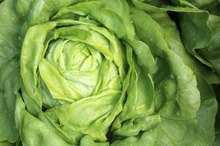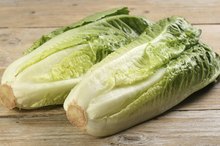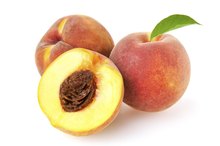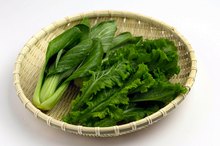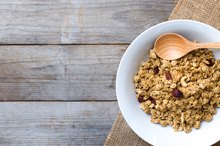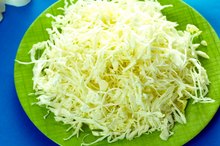Is Lettuce Good for Losing Weight?
Lettuce is likely one of the first foods you think of when you start to plan a diet to lose weight. Romaine, green-leaf and red-leaf lettuce are all good choices if you are on a weight-loss diet, and you do not need to stick to boring bowls of lettuce alone to take advantage of the benefits.
Helps You Limit Calories
You need to consume fewer calories than you expend to lose weight, and lettuce is effective for helping you do that because it is so low in calories. A cup of romaine lettuce contains 8 calories, and a cup of green leaf lettuce contains 5 calories. Lettuce can help you lose weight because it allows you to consume large, satisfying meals without too many calories. Try a large green salad with romaine lettuce, raw vegetables and tuna, or add lettuce to sandwiches and wraps to make them bigger without adding many calories.
Filling
The Nutrition in Bibb Lettuce
Learn More
A weight-loss diet can leave you feeling hungry, but you can reduce your hunger by choosing foods that are filling for the number of calories they contain. The Centers for Disease Control and Prevention suggests focusing on water-rich, high-fiber foods to suppress hunger and limit calories. Water composes 95 percent of the weight of lettuce, and each cup of romaine lettuce provides 1 gram of dietary fiber. Its water and dietary fiber content make lettuce a good food for weight loss.
Substitute for Higher-Calorie Foods
Lower your total calorie consumption to promote weight loss by replacing higher-calorie or higher-carbohydrate foods with lettuce, which contains less than 2 grams of carbohydrates per cup. Use a large leaf of lettuce instead of a tortilla as a wrap for beans and salsa, or wrap turkey breast and low-fat cheese in lettuce instead of putting it on sandwich bread. You can save calories by eating lettuce wraps instead of egg rolls: Roll cooked chicken breast, low-sodium soy sauce, diced bok choy and water chestnuts in lettuce instead of fried egg roll wrappers.
Best Paired With Other Low-Calorie Foods
Are Mangoes Good for Dieting?
Learn More
Lettuce itself is low in calories and carbohydrates, but not all dishes containing lettuce are good for weight loss. A low-calorie salad with lettuce, tomatoes, cucumbers and chicken breast can turn into a high-fat meal with several hundred calories if you use crispy fried chicken and add full-fat cheese, croutons and bacon. Full-fat salad dressing, such as ranch, contributes 120 or more calories per serving. Lettuce is most helpful for losing weight if you consume it with other vegetables and sources of lean protein.
Related Articles
References
Writer Bio
Natalie Stein specializes in weight loss and sports nutrition. She is based in Los Angeles and is an assistant professor with the Program for Public Health at Michigan State University. Stein holds a master of science degree in nutrition and a master of public health degree from Michigan State University.
